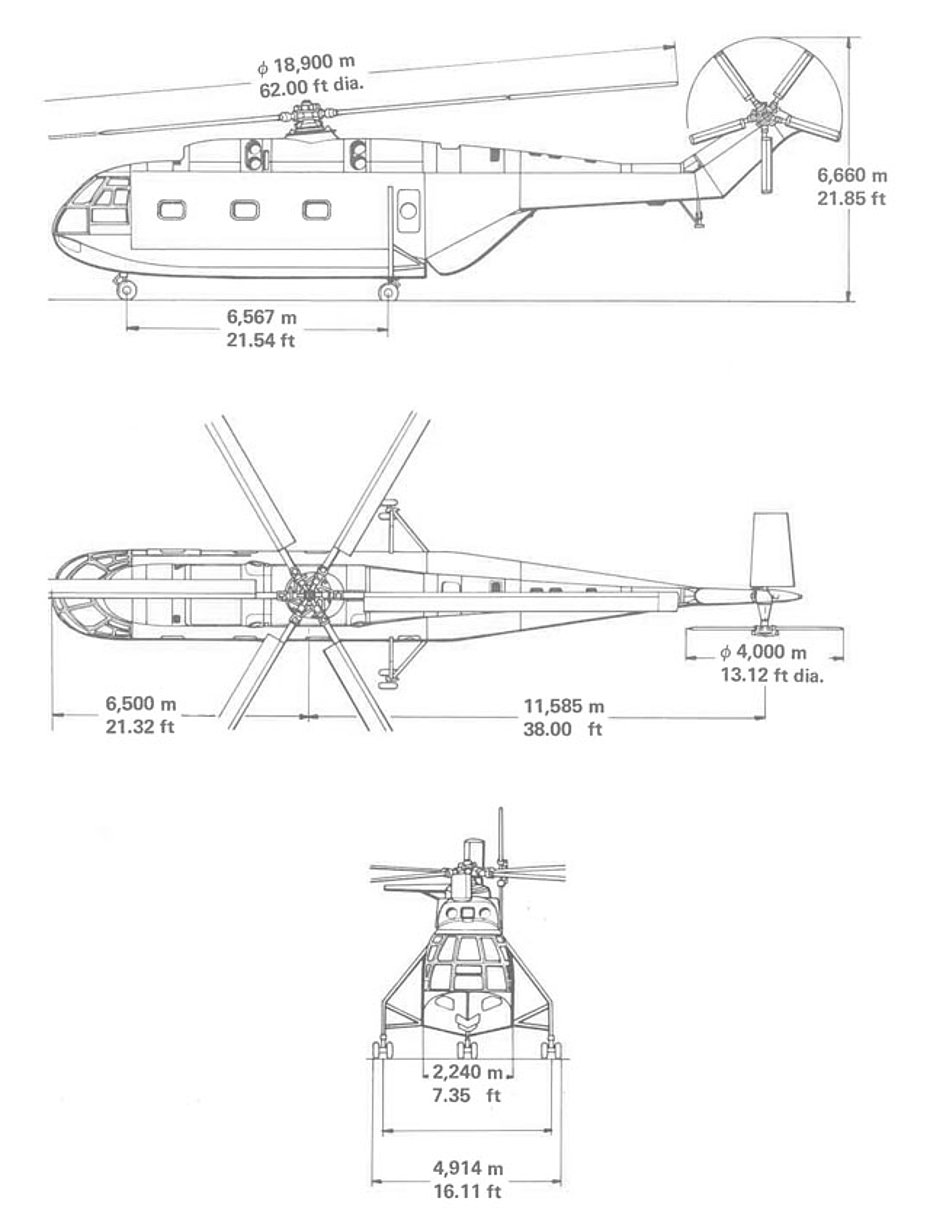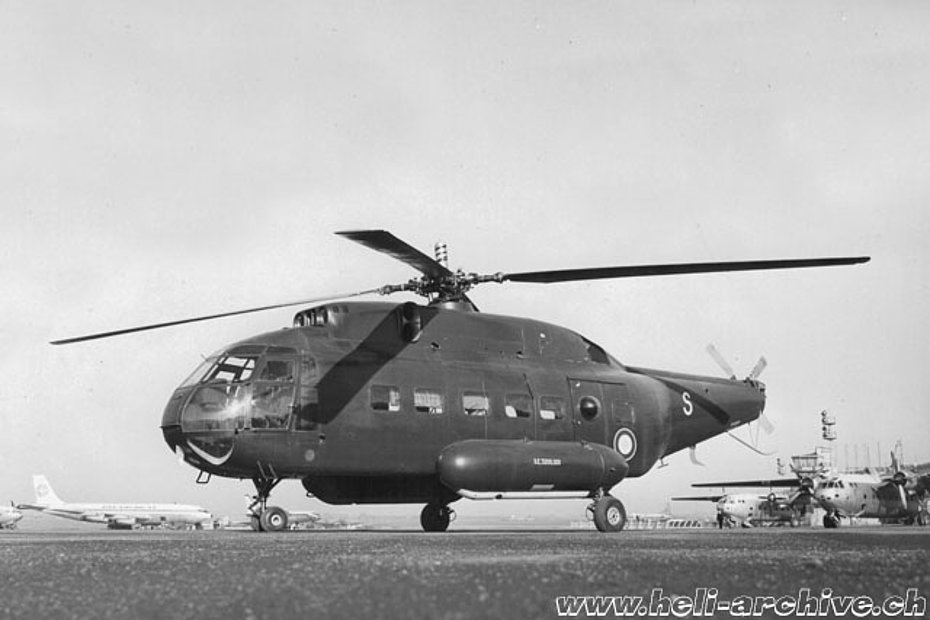
SA 321 Super Frelon - History and technical description
Origins and development
During the second half of the 1950s, the French state-owned company Société Nationale de Construction Aéronautiques du Sud Est (SNCASE), which on March 1, 1957 had merged with Société Nationale des constructions aéronautiques du Sud-Ouest (SNCASO) to form Sud Aviation, started with the design of the SE 3200 Frelon (hornet), a multipurpose helicopter intended to replace the Sikorsky H-34/S-58 at the time employed in the Algerian conflict and manufactured under licence in France.
SNCASE developed the new helicopter to meet the requirements of the French armed forces: the Armée de l’air and the Armée de Terre were looking for an aircraft suited for the transportation of assault troops, armaments, ammunitions, casualty evacuations, cargo transportation, search and rescue, while the Marine Nationale for its part needed a helicopter for anti submarine warfare, mine laying, and maritime patrolling.
These requirements were contained in a contract signed between the French armed forces and the French manufacturer.
SNCASE also planned to develop a civilian version that could carry 20 to 30 passengers. The design of the new helicopter, whose planned maximum take-off weight was around 7 tonnes (15,430 lb.), was entrusted to a team led by engineer Charles Marchetti assisted by Emile Vongérichten. The first drawings with a description of the project were presented in February 1956. Following approval construction of a test bench and two prototypes (SE 3200-001 F-ZWVS and SE 3200-002 F-ZWVT) commenced. The first prototype with the call sign F-ZWVS flew for the first time on June 10, 1959 at Le Bourget airport while the second flew on October 26, 1959.
The SE 3200 Frelon was a large helicopter, someone said not very aesthetically attractive, of conventional layout, powered by three Turbomeca Turmo III free-turbine engines all geared to a single transmission. This innovative solution, quite unusual, allowed the helicopter to complete the mission in case of an engine failure.
Two large streamlined fuel tanks designed to serve as floats in the event of a ditching were mounted to the fuselage sides. The helicopter had a tricycle fixed landing gear.
In order to reduce its size the main rotor blades could be folded rearward and the tailboom sideways. This allowed the direct loading of vehicles into the wide cargo cabin where there was space for 24 fully equipped soldiers, or 15 wounded on a stretcher and two attendants or a 1,995 kg (4,400 lb.) load.
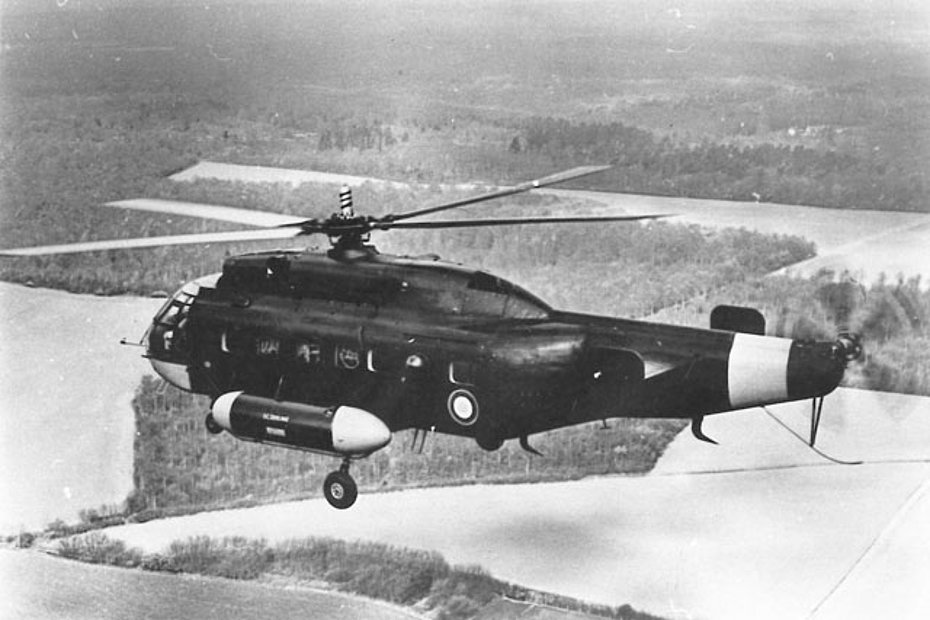
Flight tests, marked by some incidents, happily ended with only material damages, revealed several technical problems for example with the tail rotor, the self-adjusting horizontal stabilizer and the rotor blades balance.
The poor performances were attributable to the fact that the empty weight was about one ton (2,205 lb. higher than expected (4,500 kg/9,920 lb.). Several changes were made in order to improve flight performance: the tailboom, for example, was redesigned and stretched by 80 cm and equipped with a larger five blade tail rotor.
The SE 3200 Frelon was evaluated by the Center Essai de Vol (CEV now known as DGA – acronym of Direction Générale de l'Armement - Essais en vol, the French organisation charged to test aircraft, aeronautical armaments and equipment before being used for military or civilian tasks. In its evaluation report, the CEV wrote that globally the contract clauses were fullfilled but the flight characteristics were mediocre, in particular as regards the control around the pitch axis, that the empty weight was too high in relation to the take-off weight and the centre of gravity margins were too limited which reduced the usage of the helicopter.
Other shortcomings concerned the high level of vibrations which led to the apparition of cracks and straps, the limited accessibility to the turbines and transmission area, and minor but continuous technical failures.
At the beginning of 1963 with the appearance of the new SA 321 Super Frelon, and after about 200 hours of test flights logged on both prototypes, the development program was cancelled and the plans to produce the SA 3200 in series definitively abandoned.
All things considered it can be said that the SA 3200 was a fiasco, one of the few if we consider the prolific French helicopter production. At that time Sud Aviation was manufacturing the excellent Alouette 2 and 3 series and developing the SA 330 Puma that achieved a remarkable commercial success.
The famous French test-pilot Roland Coffignot talking about his flight experiences on this model stated that "The SE 3200 Frelon had all the defects that a helicopter should not have, but has taught us a lot".
Based on these unsuccess there were also misconceptions as for example the fact that the helicopter designed for the transportation of troops and commandos wasn’t armored, or the fact that despite the maritime use wasn’t amphibious.
However to use a metaphor, Sud Aviation did not throw the baby out with the bathwater. Thanks to a technical cooperation agreement with the American company Sikorsky Aircraft announced in July 1961, and thanks to the experience acquired, the engineers returned to the drawing board and designed a new helicopter.
Therefore we can affirm that the project of the SA 321 Super Frelon rose from the ashes of the SA 3200 and was chosen among three projects (known as the SE 3210 – later SA 321 -, SE 3220 and SE 3230).
At the beginning the development of the Super Frelon was a multi-nation program which involved West Germany, whose plan was the purchase of 150 helicopters to meet its need for heavy helicopters, and Italy where Agusta was working on the development of the unsuccessful Agusta 101G also powered by three turbines. After the initial interest both nations decided to equip their armed forces with Sikorsky models manufactured under licence: Germany purchased the CH-53 while Italy acquired the SH-3 Sea King.
World speed record
Although similar to its unlucky predecessor, the SA 321 Super Frelon incorporated some major innovations such as for example a new six-blade main rotor that, unlike all the helicopters built by the French manufacturer, rotated counterclockwise and this because it was developed by Sikorsky, a five-blades tail rotor (similar to that of the Sikorsky S-61), new fuel tanks installed in the central section under the floor to lower the center of gravity and a hull-shaped fuselage (inspired by the Sikorsky S-62) which allowed landings on calm water as desired by the French Navy.
In this field, Sikorsky had a longtime experience that already began in the 1930s with the construction of the famous "flying clippers".
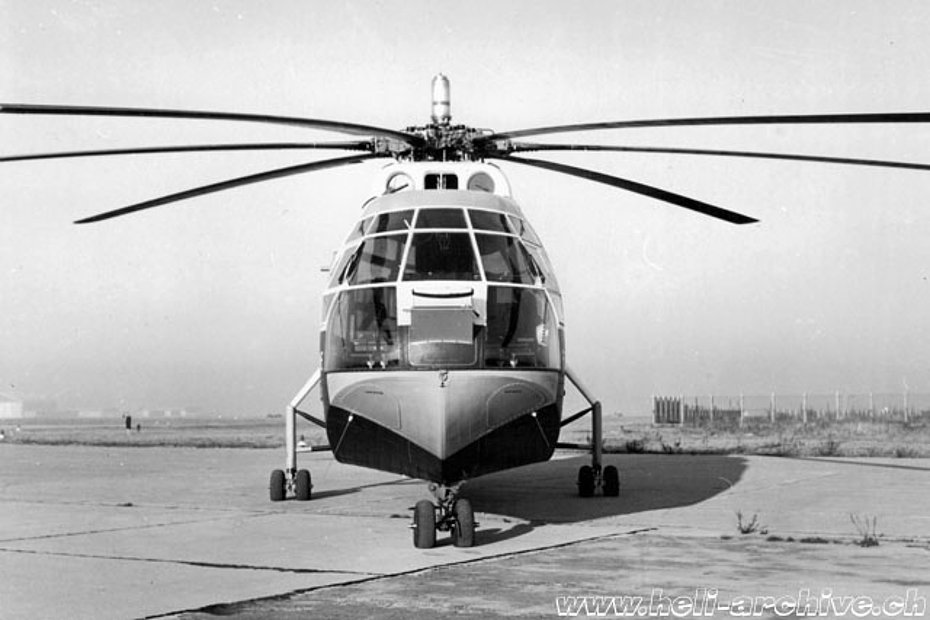
The fuselage incorporated a rear hydraulic ramp to facilitate loading and unloading. At customer’s request in order to reduce its stowing size the Super Frelon could be equipped with a hydraulic system to fold the main rotor blades back while the tail assembly was folded forward and down.
The empty weight of the aircraft increased considerably and went from 7,500 kg (16,534 lb.) of the 3200 to 11,575 kg (25,563 lb.).
The construction of the first prototype originally designated SA 3210-01 and registered F-ZWWE (nowadays this prototype is preserved at the Air and Space Museum in Le Bourget) was started at La Courneuve plant in northern Paris at the beginning of Autumn 1961 and occupied the engineers for almost one year.
This prototype made its first flight on December 7, 1962 in Marignane at the hands of the famous chief test-pilot Jean Boulet and Roland Coffignot (the same crew who had made the first flight with the SA 3200), assisted by engineer Jean-Marie Besse and flight mechanic Joseph Turchini. It was powered by three Turbomeca Turmo IIIC2 each developping a power of 970-1103 kW (1,320 to 1,500 hp).
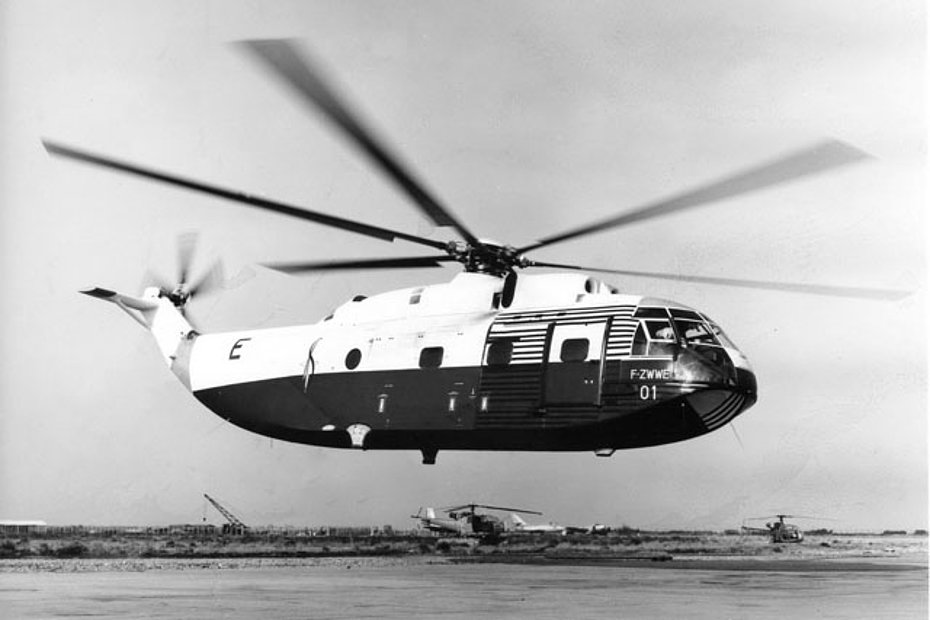
The second prototype (F-ZWWF) in navy configuration was tested for the first time on May 28, 1963. From the beginning of 1964 to 1965 Sud Aviation manufactured four pre series aircraft (registrations F-ZWWH - this aircraft was lost in a tragic accident in the gulf of St Tropez on May 30, 1965 and was replaced by F-WMCU), F-ZWWI, F-ZWWJ, F-ZWWK).
After the first encouraging results obtained during the test flights, Sud Aviation (which at that time employed about 4,600 people in the helicopter division, 600 of which were working in the design office) decided to launch the new helicopter on the market.
Desiring to wipe out the air of distrust surrounding the new helicopter, the French manufacturer thought that the ideal way to attract international attention and advertise the sale of the new helicopter would be to make it the star of an exceptional exploit, namely to set a new world speed record.
For this reason, Sud Aviation requested the help of the renowned French engineer and aerodynamic engineer Marcel Riffard who suggested, in addition to the lightening of the helicopter, a series of modifications that transformed the Super Frelon into a "racing horse" and made it even more aerodynamic.
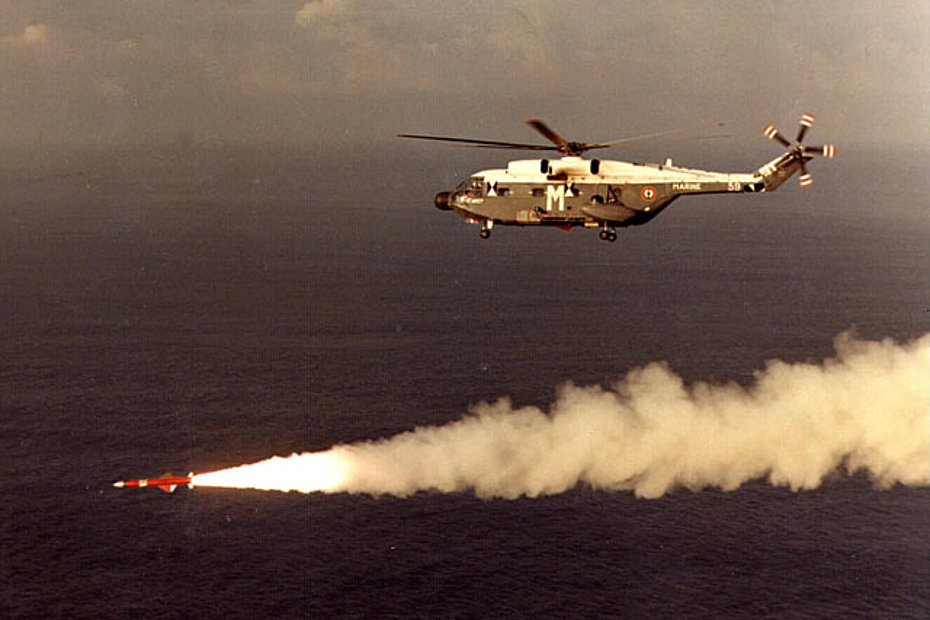
On July 22 and 23, 1963, the helicopter set three international speed records: over a 3-km (1.9 mi.) course, at limited altitude, with 341.18 km/h (approximately 212 mph), over a 15 to 25 km (9.3 to 15.5 mi.) course, at unrestricted height, with 350.29 km/h (approximately 218 mph) and 334 km/h (207 mph) in a closed circuit of 100 km (62.1 mi.) along the route Istres-Arles-Saintes-Maries-de-La Mer.
The start of the series production
After the completion of the four pre-series models powered by three Turbomeca Turmo IIIC3 turbines (the first of which flew on January 31, 1964), series production commenced during September 1964. The first aircraft off the assembly line achieved its maiden flight on November 30, 1965.
The Marine Nationale which ordered 17 units in December 1963 was the first customer to receive the new aircraft.
For its employment in the antisubmarine warfare the helicopter could be equipped with various armaments such as self-guided torpedoes, missiles and depth charges.
The operational equipment and anti-submarine equipment included automatic pilot, radar altimeter, Doppler radar, computer, tactical navigations plotting board, localizer, dunking sonar system. The helicopter could assume both the detection and attack roles from a land base or from a cruising ship.
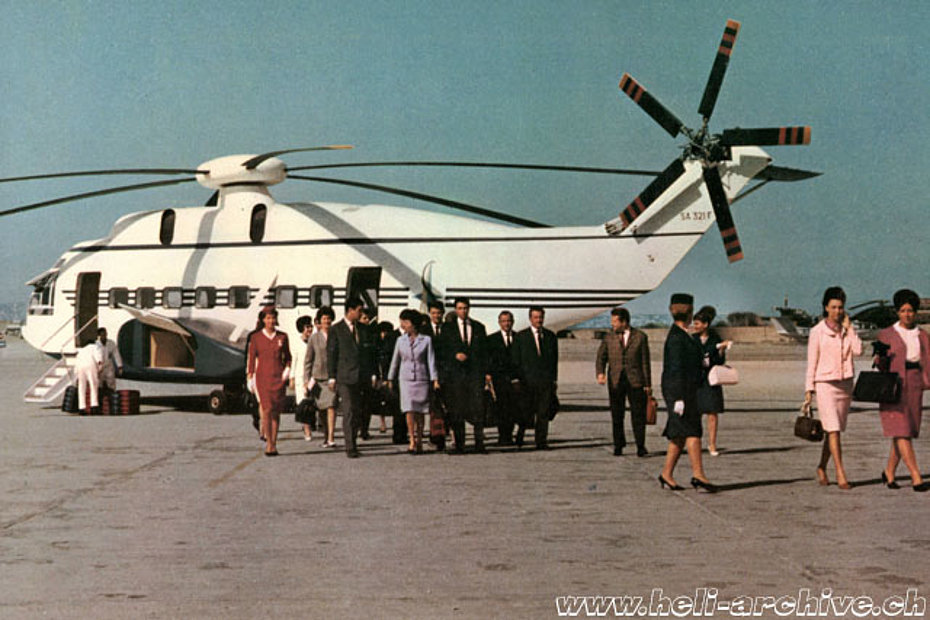
Depending on the equipment installed it could also be employed for mine laying, minesweeping or ship towing. Carrying weapons in addition to search radar and sonar, the SA 321 was used in France to patrol the seaward approaches to the navy’s nuclear submarine base at Brest. Some were modified with nose-mounted radar and Exocet missiles for anti-ship attack. On navy versions avionics equipment was housed in a dome mounted on sponson.
At the end of 1972, 60 aircraft had been delivered (the number rose to 99 at the end of 1976) to eight military customers in six different countries.
According to the information gathered, including the two prototypes and four pre-series models, a total of 110 aircraft have been manufactured.
Construction in series ceased in 1981 due to lack of orders.
The sale price of a SA 321 Super Frelon at the time of its introduction on the market was about 1.25 million USD (about CHF 6 million, 10 millions CHF nowadays), a considerable price: with the same amount of money it was possible to buy a dozen of new Bell 206 Jet Ranger helicopters! A single Turbomeca Turmo cost almost the equivalent of a Jet Ranger.
In a memorial written during the official presentation in Switzerland (1966) it was pointed out that the operating cost of the helicopter was about CHF 7,500.00/hour (CHF 125.00/min), hence 24,850/414 CHF or USD nowadays.
Each component was designed for a minimum lifetime of at least 1,000 hours.
The helicopter had a long operational career considering that it remained uninterruptedly in service with the French Navy over a forty years period. The SA 321 Super Frelon has also been used in various conflicts (six-day war, gulf war, conflict in ex-Yugoslavia). On several occasions military Super Frelons were used for civilian tasks such as the fight against pollution after the disasters caused by the sinking of the oil tankers, the rescue of people dispersed at sea or in support of the civil defence.
The latest operational Super Frelons at the Lanvéoc-Poulmic Naval Base near Brest, which had been delivered during the early 1970's, were retired from service in April 2010 and donated to various museums including the aforementioned Musée de l’air et de l’Espace in Le Bourget.
The French helicopter was sold to the armed forces of South Africa (16), China (13), Iraq (10), Israel (12), Libya (9), Zaire (1).
The commercial success of this model was hampered by the appearance of the SA 330 Puma designed by Sud Aviation on behalf of the French Army and manufactured in nearly 700 units.
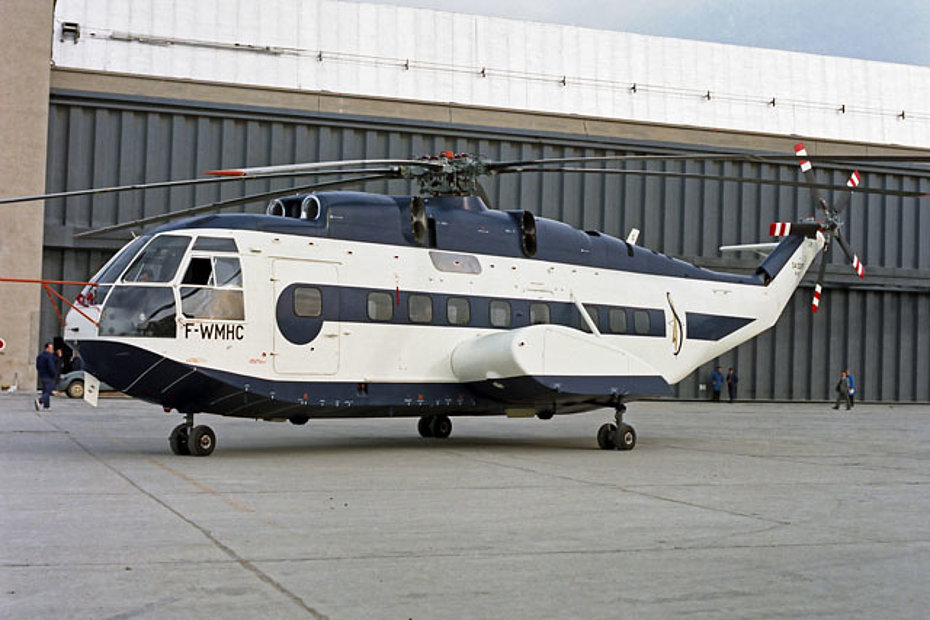
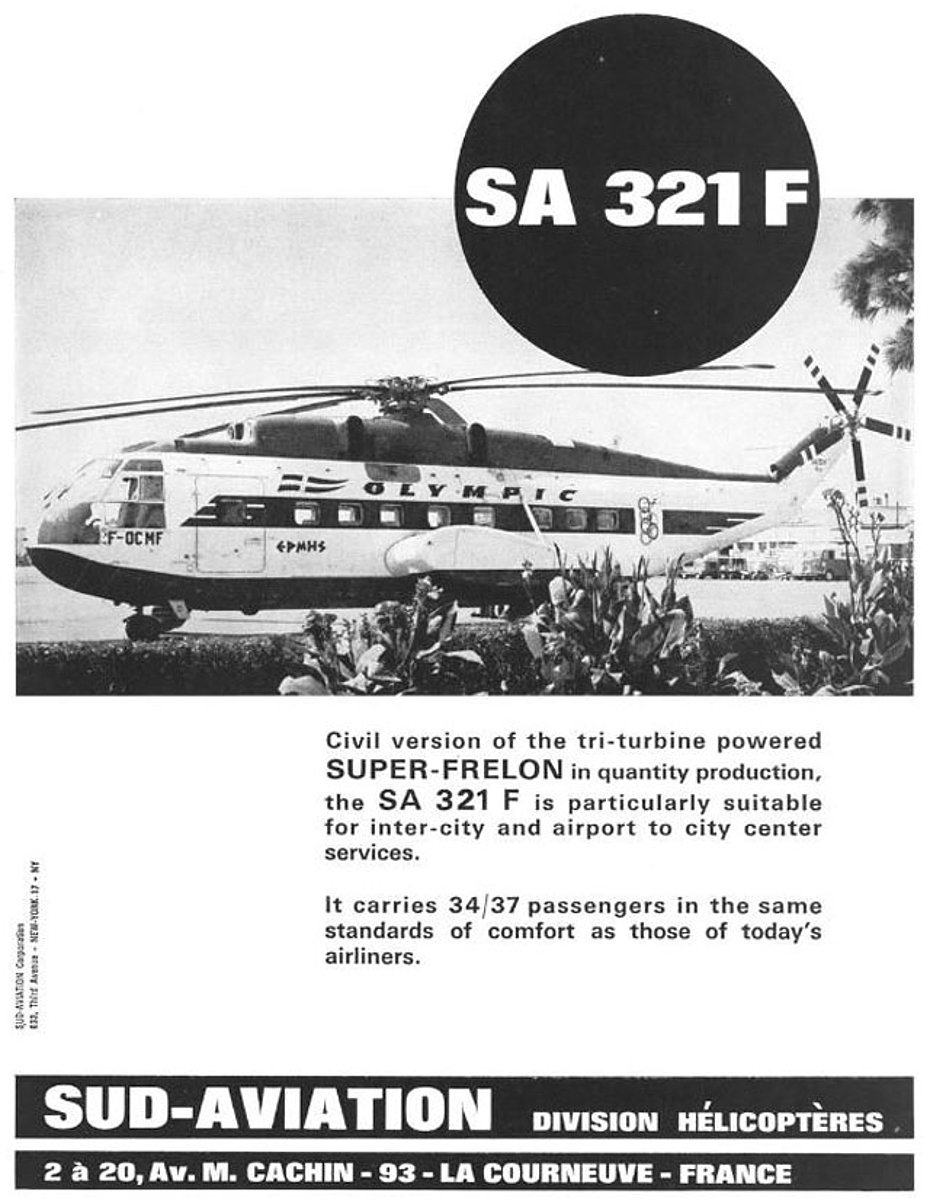
Civilian employment
From the beginning Sud Aviation planned to develop a civilian version of the 321 Super Frelon. In 1965, at the Paris-Le Bourget aeronautical salon, a full-size mock-up of the civilian version was displayed. Three versions were proposed: 37 passengers without toilet, 34 passengers with toilet and a version for 14 passengers and space for freight. In order to install more seats, the rear access ramp was eliminated and its general appearance after the restyling resembled to that of the model which set the world speed records.
The Belgian Sabena was the first airline to show serious interest in the SA 321 Super Frelon. Early May 1965 it experimentally employed two SA 321 Super Frelons for freight transportation along the Brussels - Eindhoven and Brussels - Paris routes. During these flight tests one of the helicopters made an IFR approach and landed in low-visibility conditions at Brussels Airport.
In 1967 a SA 321 was extensively modified to be transformed into a new civil version known as the 321F adapted for the tranportation of 34 passengers. The new helicopter registered F-BMHC was completed on April 7, 1967 and was presented at the 27th Paris-Le Bourget Air Show (May-June 1967).
In January 1968, the SA 321F which was designed in accordance with the US Federal Aviation Agency’s FAR 29 regulations completed cold-weather airworthiness certification tests in Norway.
In February, during the 10th Olympic Winter Games celebrated in Grenoble, it was employed to fly members of President Charles de Gaulle’s entourage, including several politicians and VIP on inspection tours of the region. The helicopter operated from the light aircraft airfield at Le Versoud, about 15 km (9 miles) from the center of Grenoble, and was occasionally used to pick up passengers at the international airport of Grenoble–Saint-Geoirs about 40 km northwest of Grenoble.
Its commercial use was not allowed before June 27, 1968 when this version obtained the type certificate issued by the Directorate General for Civil Aviation.
Meanwhile, the famous Greek shipowner Aristoteles Onassis, who founded Olympic Airways in 1957 (later Olympic Airlines), signed a letter of intents for the purchase of the huge helicopter nicknamed "Hermes". Just a few weeks later on July 15, 1968, this aircraft with its new registration F-OCMF (nowadays preserved at the Weston-Super-Mare Helicopter Museum with the colors of the time) started a commuter service between Athens and some islands including Skiathos, Mykonos, Chios and Santorini.
The three months schedule was an experiment to determine passenger’s acceptance during the summer tourist season. By doing this Onassis intended to gather practical experiences that would serve in order to promote island tourism by drastically reducing travel time. For example, the connecting time between the capital Athens and Skiathos, which is about 140 km away, would take only 35-40 minutes by helicopter instead of 6 hours by ferry boat. One-way fare cost was 15.30 USD (110 USD today).
Both Sud Aviation and its potential customers were skeptical about the idea of using the SA 321F for such services, but Onassis had a different opinion and stated that his company was ready to absorb eventual losses with the sale of tourist packages and the revenues of airliners scheduled flights.
During the 3 months trial that lasted until October 15, 1968, the helicopter carried 8,581 passengers and 35 tons (77,200 lb.) of freight totalling 462 hours of flight, at an average of about 5 hours a day.
Like other operators offering similar shuttle services using helicopters such as New York Helicopters, Los Angeles Airways, Sabena or the Italian Elivie and Elipadana, Olympic Airways also decided to suspend the connecting flights.
The unquestionable security offered by a three-engine helicopter involved too high operating costs for a civilian helicopter operator.
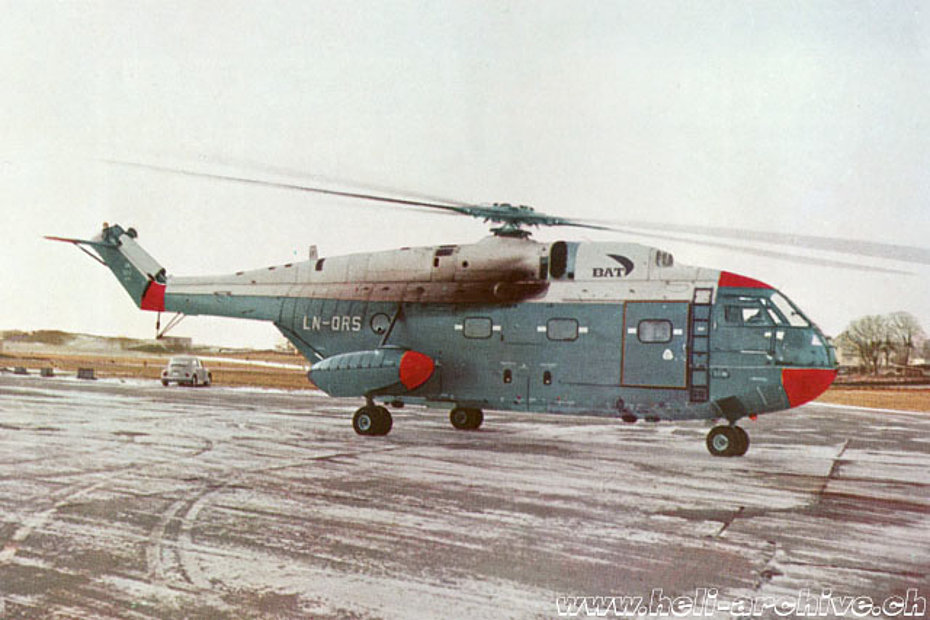
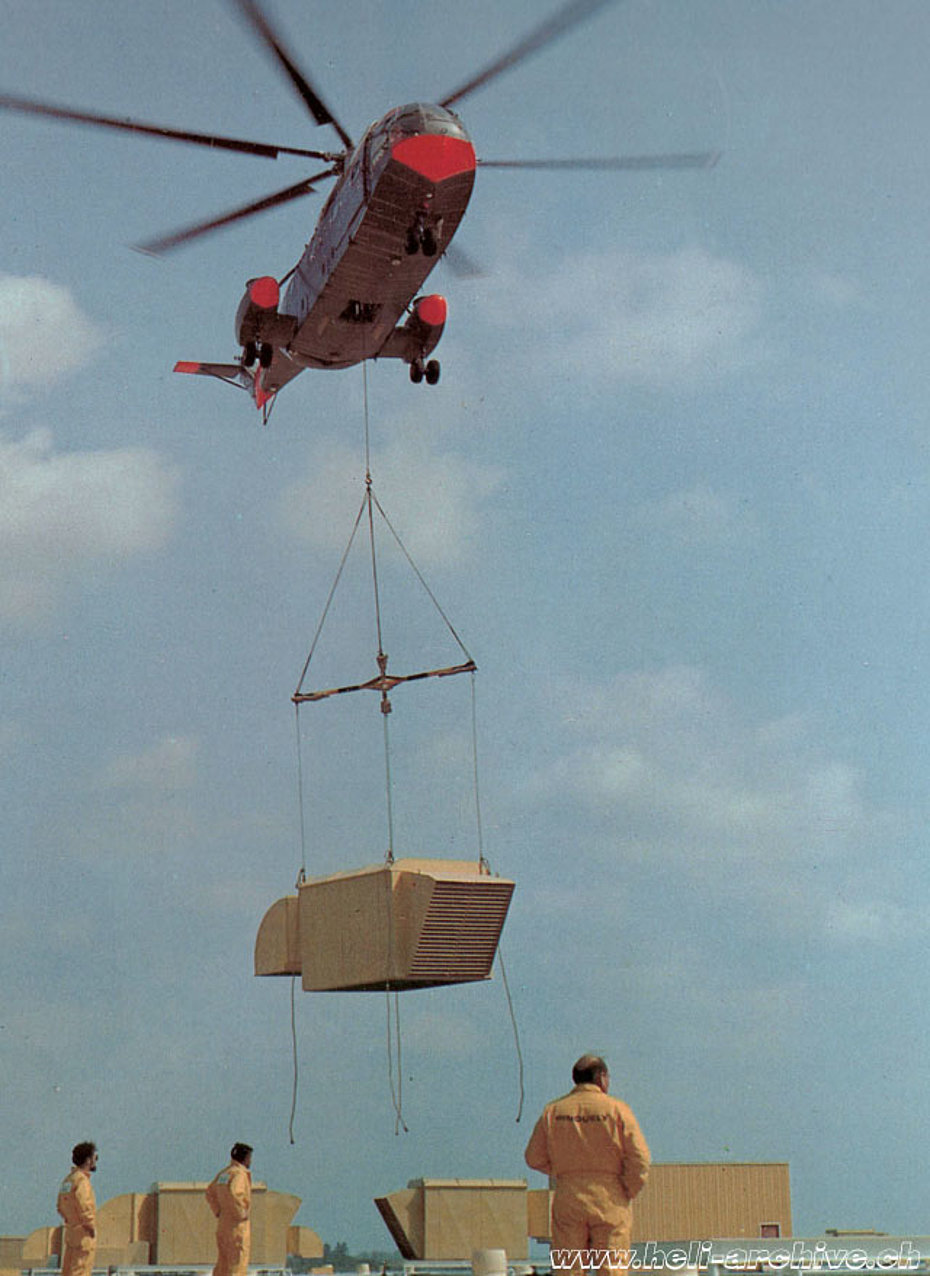
At that time the idea of using the SA 321F was also seriously taken into consideration by Prince Rainer III of Monaco, whose intention was to connect some French locations (including Nice and Cannes), Monte Carlo and the Ligurian Riviera to major international airports.
During that period Sud’s helicopter sales staff were actively exploring other potentially lucrative markets for the Super Frelon.
Plans for Switzerland for example comprised a service between Zurich and Geneva and the major Swiss ski resorts. A demonstration program was studied for the 1968-1969 ski season but remained a dead letter.
In service for the oil industry
Between 1967 and 1969 the Norwegian helicopter operator Bergen Air Transport, used a SA 321J Super Frelon registered LN-ORS (previously F-BOFL) for the transportation of personnel to oil platforms in the North sea. This civil version obtained the type certificate on October 20, 1967.
LN-ORS was then returned to the manufacturer and fitted with auxiliary fuel tanks in view of its next assignement.
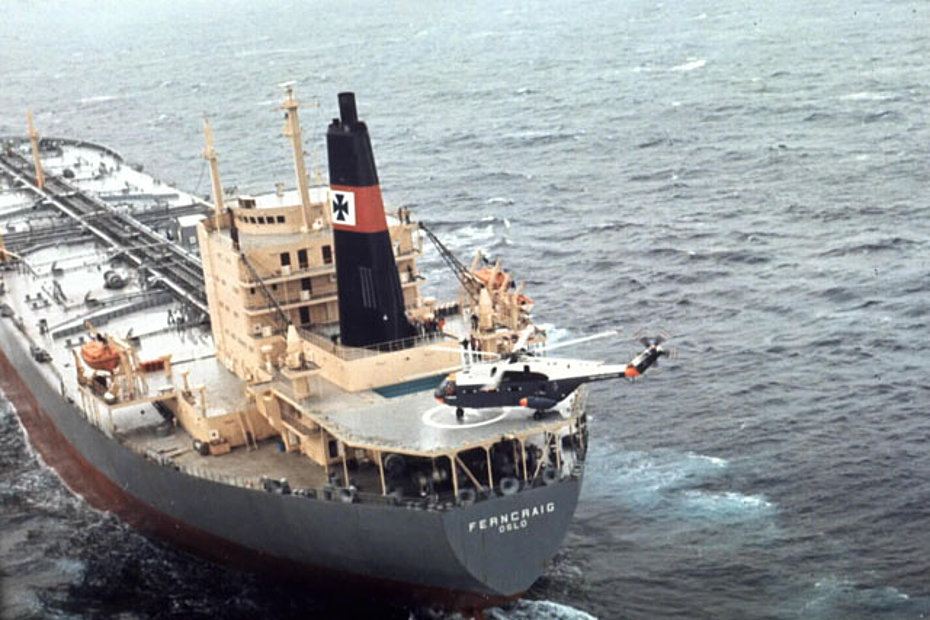
On March 24, 1970, after a 18,842 km trip (11,708 mi.), it reached in stages Papua New Guinea. The long flight lasted a total of 98 flying hours.
The pilots referred that during its employ on behalf of the Australian company Kennecott Explorations Ltd based in Sidney, due to the high humidity, continuous problems with the markers of possible cracks in the blades known as B.I.M. (the acronym of Blade Inspection Method) were reported.
Sud Aviation wished to sell the Super Frelon to large oil and offshore companies such as Northsea Air AS.
In an article pubblished in the Aviation Week and Space Technology magazine in January 1968 a spokesperson of this company stated that the helicopter was normally used to carry 17 people or an equivalent load. In order to save about 15% of the fuel, the helicopter usually took off and landed using its three turbines, while in cruising flight one of them was turned off. The loss of speed during the cruise flight on two engines was almost negligible being just 2-3 knots.
The crews operating in such hostile environments were confronted with one of the most terrifying conditions a helicopter pilot can encounter, namely icing condition.
After returning to France, this helicopter was sent to Indonesia where it was used on behalf of Pelita Air Services until 1982.
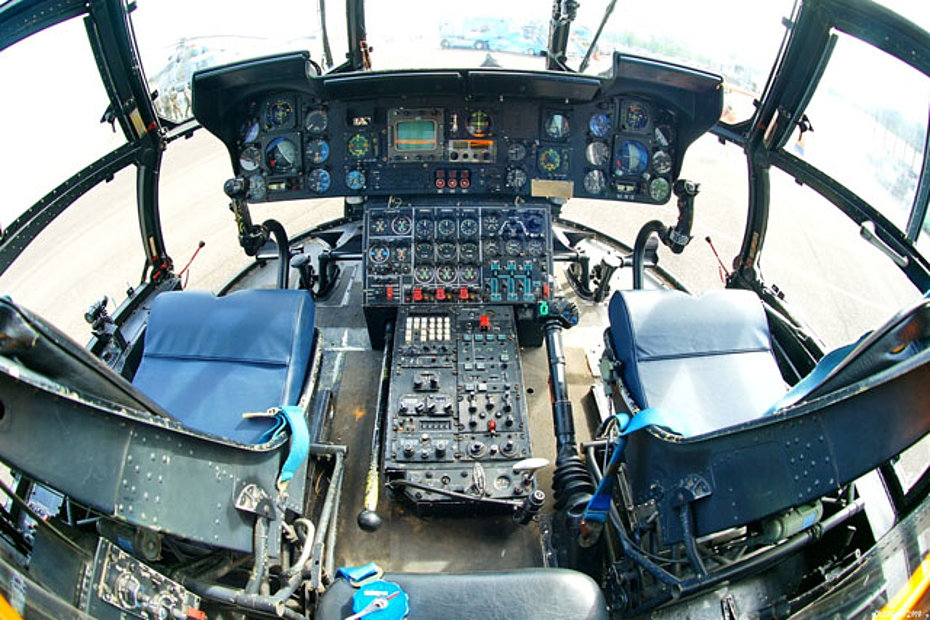
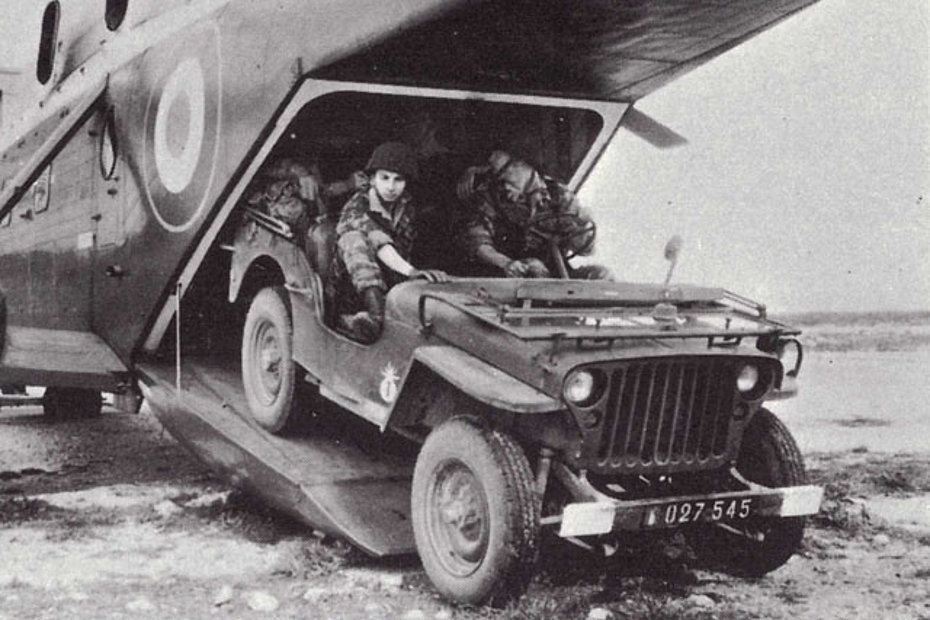
The second SA 321J manufactured (F-WMHB) was used as a demonstrator and later sold along with 12 others to China. This latter nation did not just purchased the SA 321 but also produced a very similar version known as the Changhe Z-8. The first prototype of this helicopter "made in China" manufactured by Changhe Aircraft Instustries did its maiden flight on December 11, 1985. From this model, a newer model known as Changhe Z-8F was later derived.
Technical description of the SA 321Ja
The SA 321Ja Super Frelon is a helicopter of standard configuration primarily designed for the needs of the civilian market. Contrary to Sud Aviation’s expectations this model failed to achieve the great commercial success anticipated. It is one of the few three-engined helicopter produced in series. With a maximum take-off weight exceeding 9,000 kg (20,000 lb.) it is classified as a heavy transport helicopter.
The fuselage of semi-monocoque construction consists of three sections: the cockpit, the cabin and the tail boom.
The amply glazed cockpit includes dual instrumentation and dual controls. The cockpit is accessible from inside through a passage in the rear bulkhead and from the outside by a jettison door on the right hand side. An emergency exit is provided on the left hand side for the copilot.
The canopy is fitted with two windshield wipers and with a defrosting system for windshield panes. The cockpit and the passenger’s cabin are soundprofed and fitted with a heating and ventilation system.
The pilot’s station is on the right while the co-pilot station is on the left. Both seats are anti-crash and adjustable.
A jump seat is provided in the center passage for the flight engineer or a third crew member.
The cabin has four jettisonable windows on each side. In the front part there is a sliding door 1.20 m (47 in.) wide and an emergency exit at the left rear. Both doors could be jettisoned in case of emergency.
In the back of the cabin there is a hydraulically-operated access ramp (also jettisonable). The reduced slope of about 15° allowed the direct boarding of light vehicles such as jeeps. The helicopter could fly with the ramp blocked in any position.
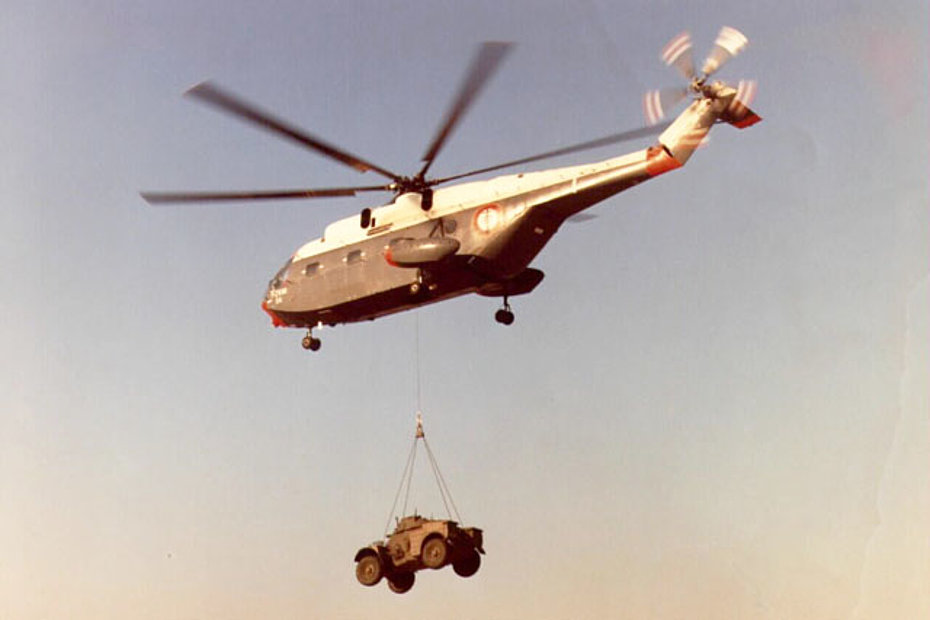
The floor, made up of watertight removable panels, includes a hatch, in line with rotor's CG, to give way to a cargo sling.
The maximum pressure allowed on the floor is 875 kg/sqm (175 lb/sq.ft.). The loads carried inside the cabin could be hoisted using a come-a-long equipment and fastened to the floor thanks to tie-down rings.
Inside the wide cargo compartment - width at the floor level 1,90 cm (75 in.), height at center line 1,83 m (72 in.), horizontal plane length 6,12 m (20 ft.), total available volume 28.90 mc (1,020 cu. Ft.) - it was possible to carry up to 30 soldiers, or 24-28 civilians, or 18 wounded patients on stretcher plus 2 attendants. A maximum suspended load of 5,000 kg (11,023 lb.) could be transported suspended on the baricentric hook.
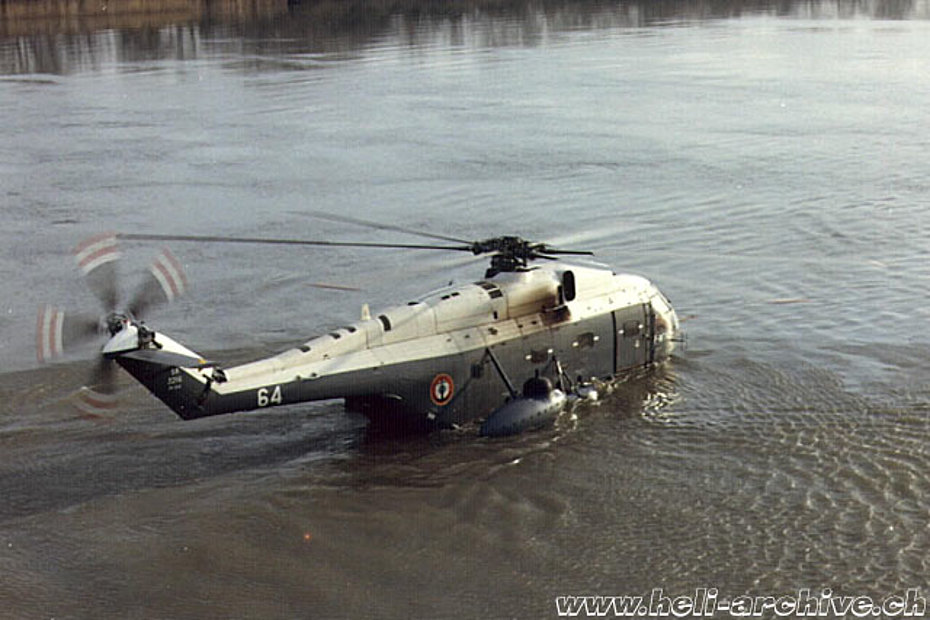
The three groups of fuel tanks divided into eight flexible cells are mounted in the central part of the fuselage under the floor and have a total capacity of 3,975 liters (1,050 USG). The refilling of the fuel tanks could be done by gravity or under pressure through a single filler at a rate of 660 liters/minute (176 USG/min). The tank caps are all mounted on the starboard side to allow the pilot in command to monitor the refueling operations.
Three auxiliary fuel tanks having each a capacity of 666 liters (176 USG) and two 500 liters (132 USG) external tanks could be mounted internally for ferry flights. By doing this the range could be extended up to about 1,500 km (932 mi.).
At the economic cruising speed and at the take-off weight of 9,000 kg (19,841 lb.), the fuel consumption was about 3.3 kg/km (4.2 liters/km), or about 1,000 liters/hour (265 USG). With a take-off weight of 12,000 kg (26,455 lb), the fuel consumption raised up to about 4.2 kg/km (5.4 liters/km, namely 1,370 liters/hour).
The tricycle fixed landing gear manufactured by Messiers (which also produced the Alouette 2 and 3’s landing gears) has twin wheels on each of the three vertical shock absorber-equipped struts. The main leading gear units are mounted on triangulated tubular structures, while the nose gear is bracketed to the cockpit bulkhead via a watertight seal in the planing bottom. The main wheels have hydraulic brakes combined with the pedals, complete with a parking hand brake, while the nose unit is fully castoring.
The landing gear could be compressed in order to save space on the ships.
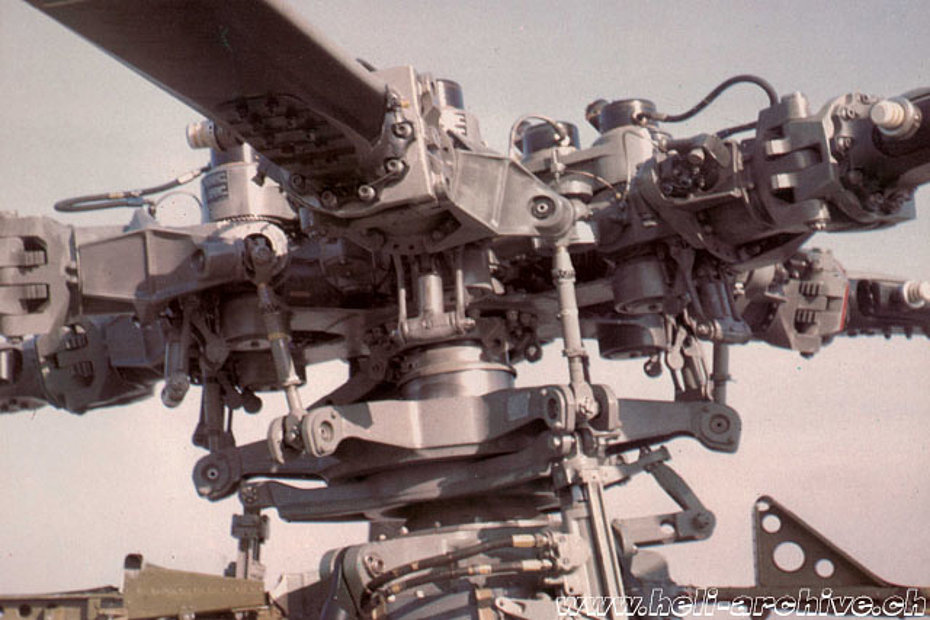
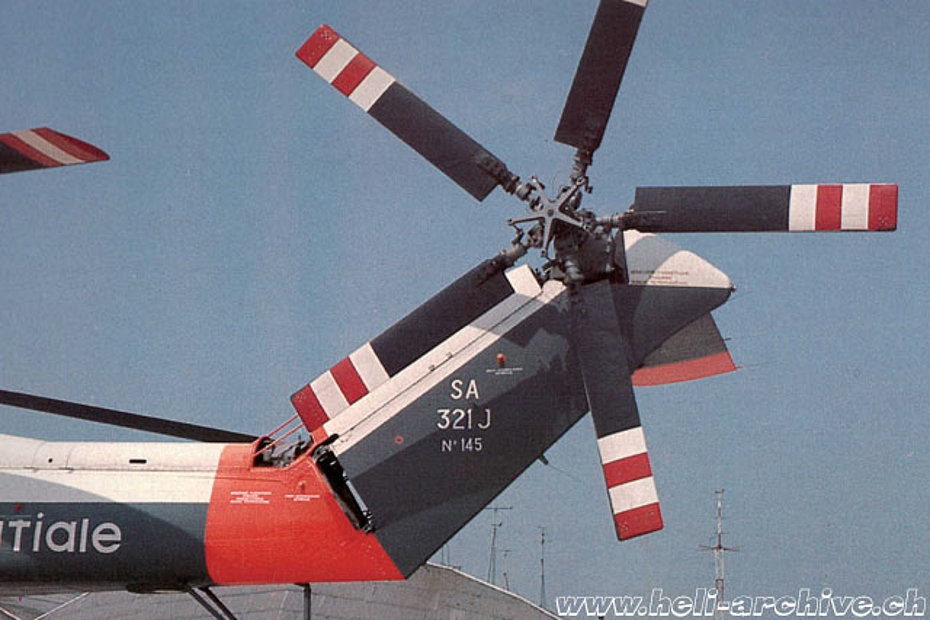
Since the helicopter was designed to be used both in the sea and in the mountains, with warm and cold weather, in summer and winter it had a complete instrumentation and could be fitted with several optional equipments.
A hatch set into the floor, positioned approximately underneath the rotor axis, was used for sling-load operations.
The relatively short tail boom is a semi-monocoque structure in line with the cabin and ends at the rear in an inclined pylon acting as a fin and carrying the tail rotor on the left haand side and the stabilizer on the starboard side.
Rotors
The six-blade main rotor developed by Sikorsky is fully articulated and rotated at a speed of about 207 rpm/min. In case of need thanks to a powerful rotor brake it could be stopped within about 40 seconds.
The interchangeable rotor blades of metal construction have a constant chord of 54 cm and a NACA 0012 profile. They were pretracked and fitted with an automatic crack detection system (B.I.M.).
The five blades tail rotor is of similar construction to the main rotor. The rotor blades were interchangeable and rotated clockwise at a speed of 952 rpm.
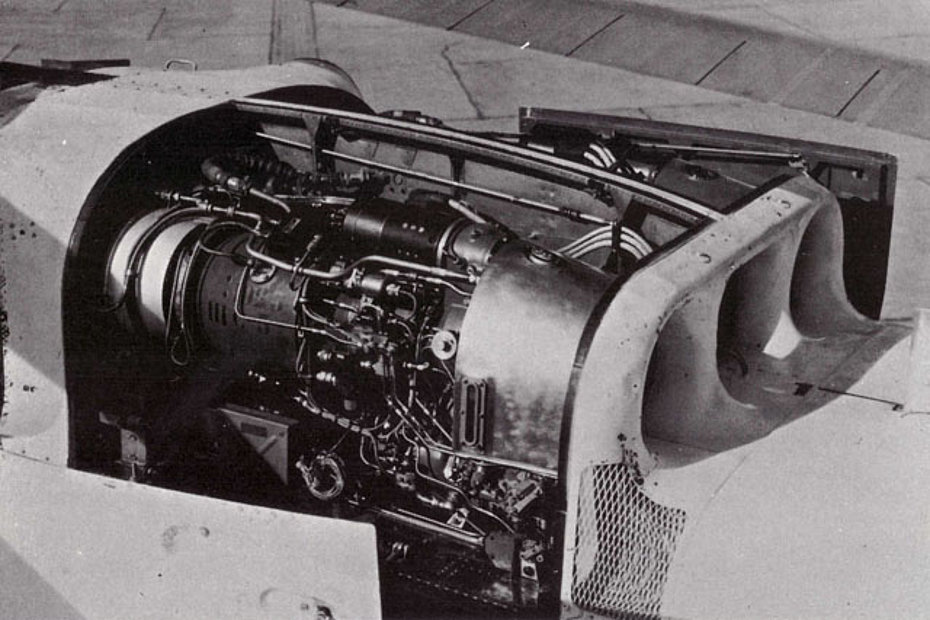
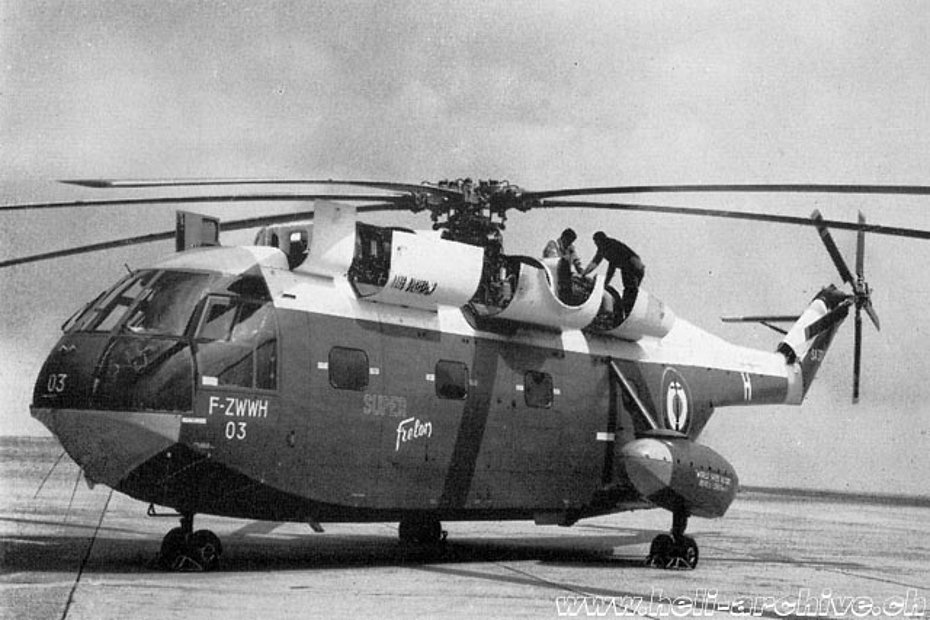
On request, the main and tail rotors could be equipped with a de-icing equipment developed by Dunlop Company Ltd.
The cyclic and the collective pitch lever as well as the tail rotor pedals are provided with dual servo jacks, each fed by two independent hydraulic circuits. The helicopter could be fitted with an autopilot.
Turbomeca Turmo IIIC6
The SA 321Ja Super Frelon was powered by three Turbomeca Turmo IIIC6 turbines each developing a maximum 1,130/1,535 kW/hp take off power, and a maximum 950/1,292 kW/hp continuous power.
Two engines are installed side-by-side in front of the main gearbox driving a common drive shaft while the third is installed behind the gearbox designed by the Italian company FIAT.
The engines and the reduction gearbox are mounted on a horizontal bulkhead firewall which forms the roof of the cabin and upper structural part of the fuselage. The engines are isolated by multiple firewalls, including transverse firewalls separating front and rear engines from the rotor gearbox, and zonal engine firewalls.
The Turbomeca Turmo is a free-turbine with a two-stage compressor consisting of a single axial stage followed by a single centrifugal stage, an annullar combustion chamber with centrifugal fuel injection, a two-stage compressor turbine and two-stage (earlier version single stage) power turbine, a single-stage speed reducer whose output shaft rotates at 5,700 rpm.
Each engine weights about 290 kg (639 lb) and is independent as regards starting, control system, lubrication and cooling, which further improves aircraft’s safety, and can be replaced on the field. Of course each turbine is also equipped with an independent free wheel. Each engine has fire detectors, a fire extinguisher system and an air intake with de-icing equipment.
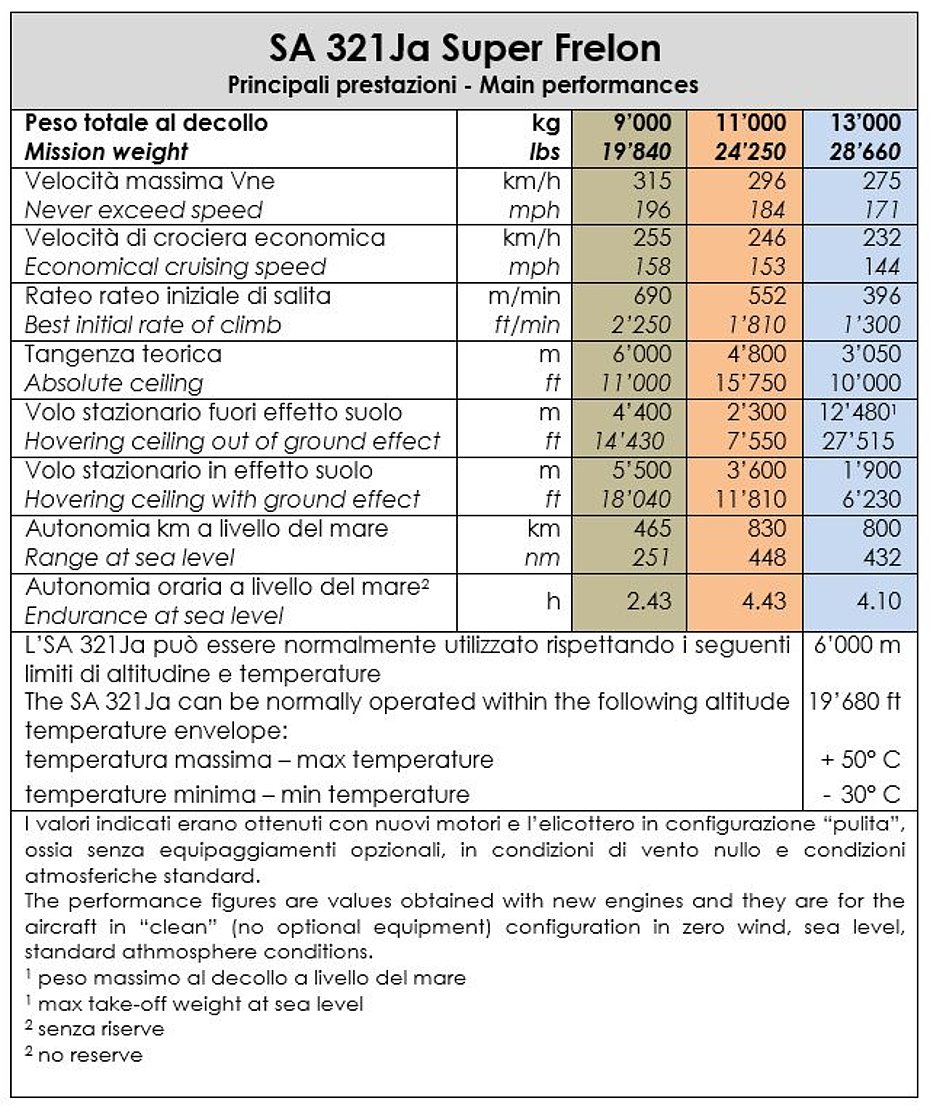
The 3,000/4,080 kW/hp main gearbox, designed in collaboration with Sikorsky and Fiat, incorporates two reduction gear stages (reduction ratio 1:29).
The gearbox drives various accessories such as oil pumps, hydraulic pumps, fans, alternators.
Some versions were equipped with a reinforced transmission capable of absorbing a 3,604/4,900 kW/hp power.
Eight sturdy hinged doors provided access to the engines and transmission, which have ample space around them to enable ground crew to service them without using external platforms.
Main performance data
The table shows the main performance of the helicopter. The helicopters delivered by January 1970 were allowed to take off at a maximum weight of 13,000 kg (28,660 lb.), with a consequent payload increase of 1,000 kg (2,205 lb.).
The standard helicopter empty weight without optional equipment was about 6,860 kg (15,142 lb.). The maximum certified take-off weight is 13,000 kg (28,660 lb.). According to the data indicated by the manufacturer, with this take-off weight, the performance of the helicopter was really limited, to the point that under ISA conditions even at sea level the SA 321 Super Frelon wasn’t able to hover out of ground effect.
For missions within a radius of about 40 km (25 miles), it could carry a maximum load in the cabin of 5,000 kg (11,024 lb.). The same load could be suspended from the cargo sling.
Equipped with optional equipment, air conditioning system and with two pilots on board (hence with an empty weight of about 7,317 kg/16,130 lb.) under ISA conditions, at a cruise altitude of 500 meters (1,640 ft) and without auxiliary tanks, the helicopter could travel a distance of approximately 825 km (513 miles) with a payload of about 2,750 kg (6,063 lb.).
Optional equipment
For civil employments the SA 321Ja Super Frelon could be equipped with a series of optional equipment. The list included: 3 internal auxiliary tanks, 2 external auxiliary tanks, pressure refuelling system, 27 passengers seats, casualty carrying equipment, cargo sling, rescue hoist, (275 kg/606 lb. capacity), internal cargo-carrying installation, navy type landing gear with floats coaming and life-raft stowage, blade anti-icing system, automatic blade and tail folding system, low-pressure landing gear, air conditioning, flight recorder, tinted green panels on cockpit and sun vizors, orange screens for instrument-flying-training.
The SA 321 Super Frelon in Switzerland
The SA 321 Super Frelon made its first appearance in Switzerland on May 24, 1966 for a series of heavy transport flights which were organized by Mr. Olivier De Coulon, Switzerland Europavia's delegate in collaboration with Heliswiss.
The helicopter registered F-ZWWJ arrived in Sion/Vs and late in the afternoon it moved to the military aerodrome of Raron/VS in view of its employement.
The French crew consisted of pilot Gérard Henry, co-pilot Jean-Bernard Albert, flight engineer Jean-Marie Besse and three mechanics.
That same evening, while all the material to be airlifted was carefully prepared at the aerodrome, Henry carried out a reconnaissance flight on the building sites located in the Gibidum region (a mountain resort south east of Eyholz village near Visp) where construction of a military cableway was underway.
The Swiss army observed the flights from close sending its pilot Vivando Formentini who used the SE 3160 Alouette 3 (V-205) for the transportation of officers and personnel of the Swiss armed forces. Sud Aviation also made available the SE 3160 Alouette F-BLGX for the transportation of the personnel from one construction site to the other and to allow the troupe of the French broadcast “Objectifs” to take aerial footages.
The list of the material to be transported on behalf of the army (total weight about 73 tons/160,934 lb.) comprised 26 reels with high voltage cables with a weight ranging between 2’500 and 3’000 kg, (5,511 and 6,614 lb.), 1 reel with cables of smaller diameter, 4 loads with building material.
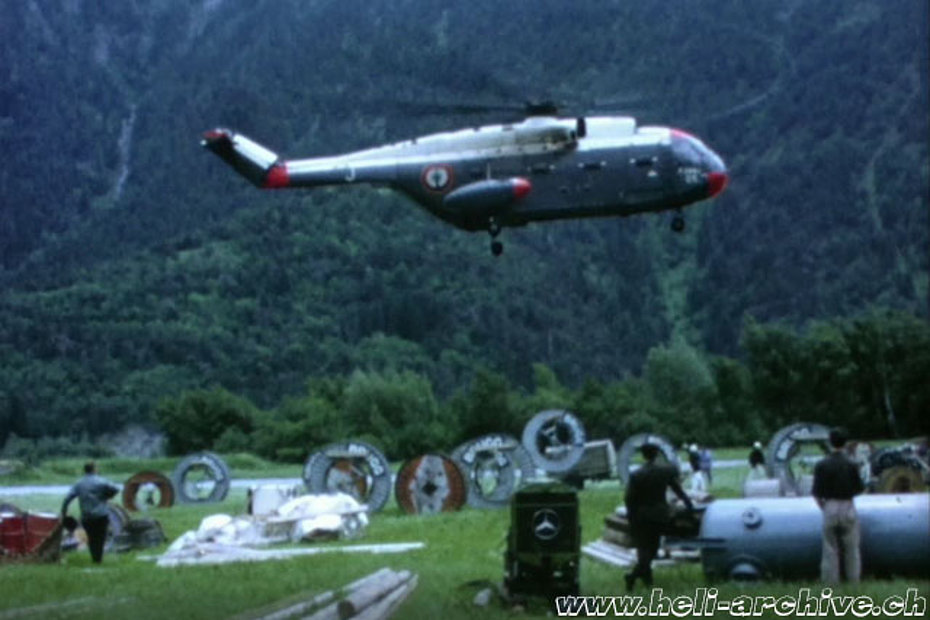
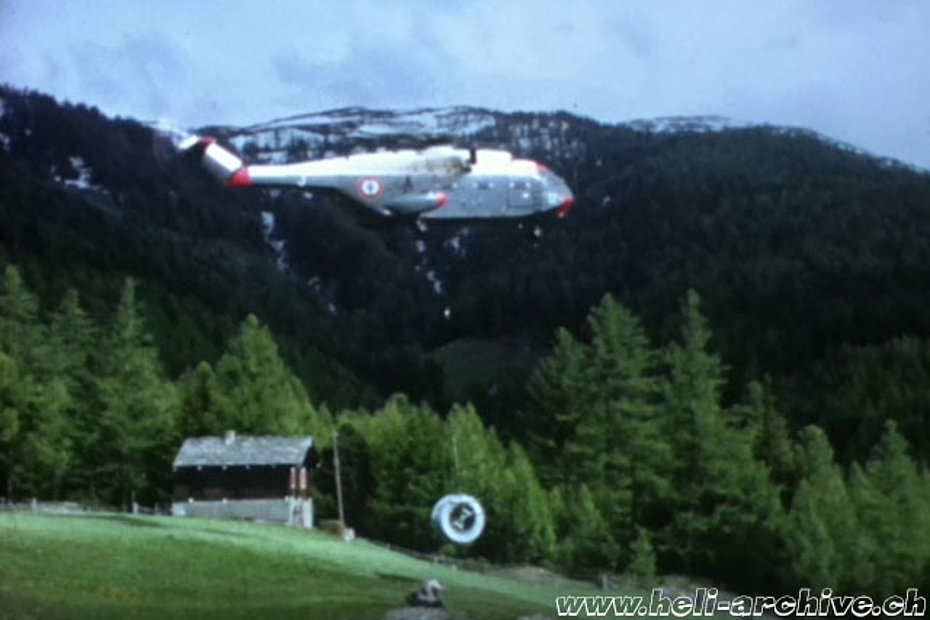
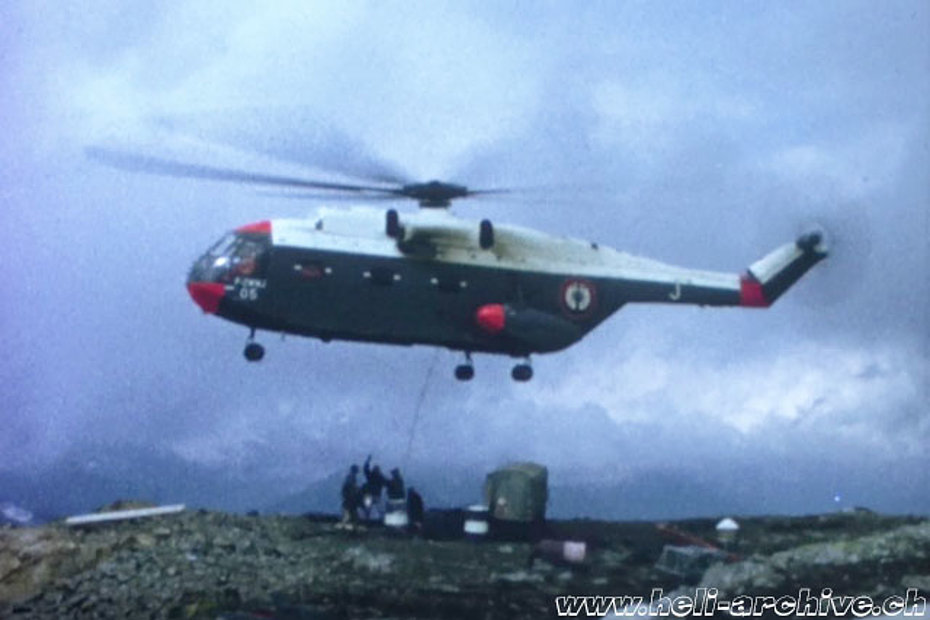
The construction company Ulrich Imboden of Visp and Garaventa of Goldau also prepared each various loads for a total weight of about 20 tons (44’091 lb.) to be set down in the Gibidum region.
Early on the morning of May 25, F-ZWWJ began to airlift the loads to various locations at altitudes varying between 1,370 (4,496 ft.) and 2,225 meters (7,300 ft.).
At the begining the transportation of the first reels caused some concerns as they were inadequently transportedy. During the flight the reel started to rotate quickly damaging the transport cable to which it was suspended, with the acute risk of breaking it.
A Swiss military observer noted that the SA 321 Super Frelon F-ZWWJ (which was powered by three Turbomeca Turmo IIIC3 each delivering a maximum continuous power of 949/1,290 kW/hp) when trasporting the heaviest loads of 3,000 kg (6,614 lb) was operating at the limit of its performance.
The crew was forced to airlift the loads with a limited fuel reserve, and every 4-5 rotations it was necessary to refuel the helicopter.
To further complicate things the weather conditions were far from being ideal.
By the end of the day, after 7h30’ of flight time, the Super Frelon returned to Sion where the mechanics carried out the usual daily checks. This helicopter, given its size and mechanical complexity, required long and accurate inspections.
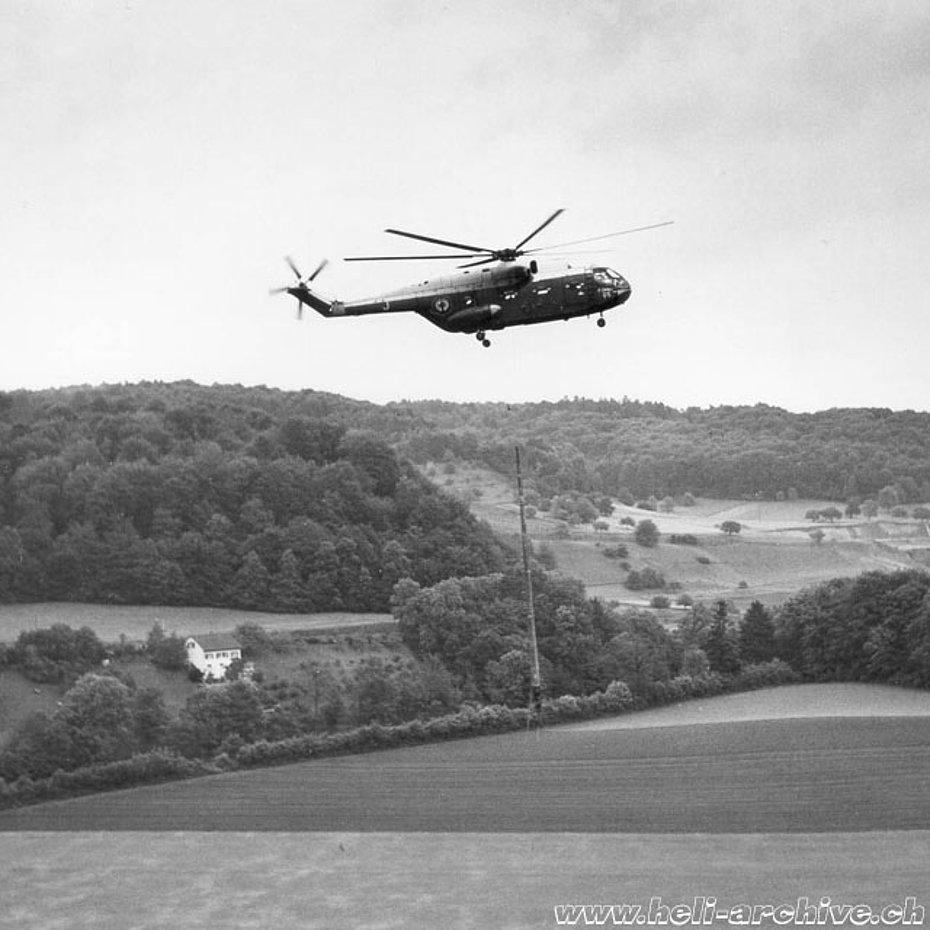
The next morning, the crew completed the job on the Gibidum on behalf of the Imboden and Garaventa companies and later in the afternoon it flew to Andermatt where other material transportations destined for the Göscheneralp and Rugghubelhütte were programmed. However because of strong winds these flights weren’t carried out. So the helicopter took off again and, after an intermediate stop in Belp, it returned to Sion.
On May 27, the flight crew took off from Sion and headed to Belp to take on board Heliswiss’s president Walo Hörning and director Peter Trachsel. They then flew to Windisch near Brugg/AG where between midday and 01:00 PM the Super Frelon airlifted and set in place four concrete pylons for a high voltage power line having a variable weight ranging between 3 and 4.3 tonnes (6,610/9,480 lb.). At the top of one of the pylons, the helicopter placed a 400 kg (881 lb.) prefabricated support. This precision work acclaimed great enthusiasm among the observers because it opened new perspectives for a deployement of the helicopter in Switzerland.
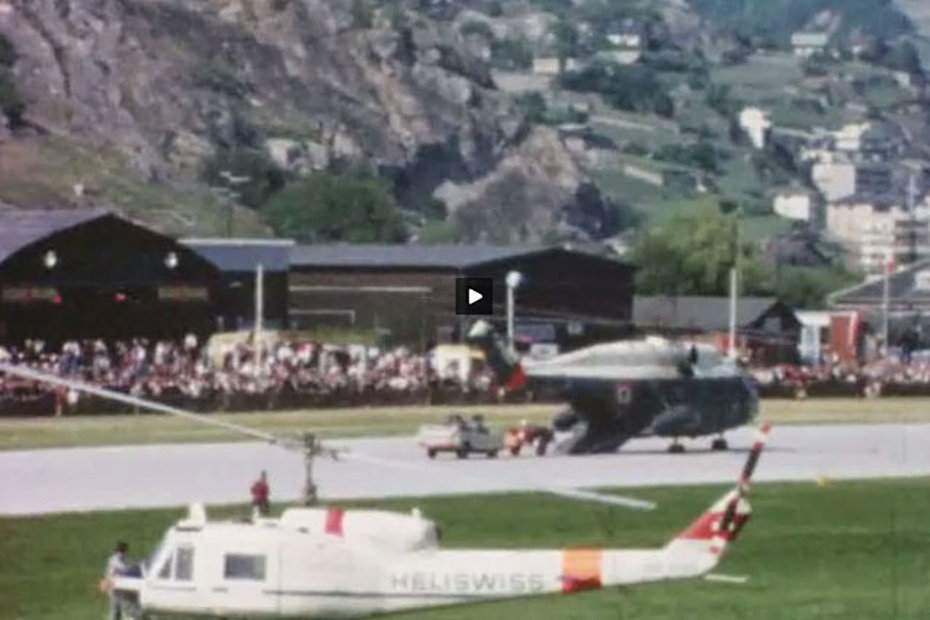
Star at Sion air show
The SA 321 Super Frelon was one of the major attractions during the aviation meeting organized in Sion on May 28-29, 1966, which attracted a large audience. The helicopter was presented by the same crew that performed the flights during the previous days.
In the afternoon, during the 15 minutes demo-flight, it trasported a group of local firefighters along with a light vehicle then discharged on the runway through the rear access ramp. It the also transported a huge tank weighting 3.9 tons (8,600 lb.).
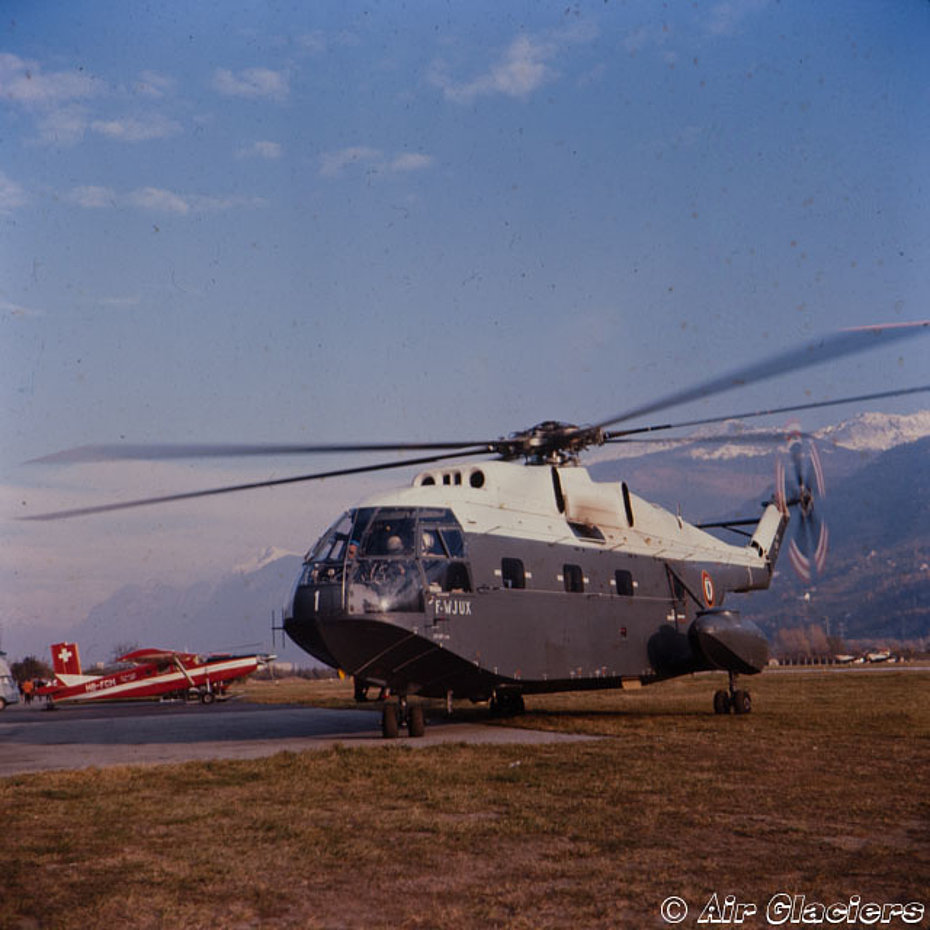
During the airshow various military and political personalities were given the opportunity to examine the helicopter from close and receive detailed technical information. Among them was the federal councillor Roger Bonvin, at that time vice-president of the Swiss Confederation as well as aviation enthusiast.
The following day, at the end of the aviation meeting, F-ZWWJ returned to Marignane/France.
The difficult mission on the Jungfraujoch
The Sphinx Observatory is among the highest astronomical observatories in the worldlocated above the Jungfraujoch (Virgin’s Yoke) in the Bernese Highlands (Switzerland) at an altitude of 3,570 meters (11,712 ft.).
This region which comprises the Jungfrau (young woman or vergin), the Mönch (monk) and the Eiger with its famous North Wall attracts every year crowds of tourists and mountaineers from all over the world.
The observatory was built on a rocky summit and lies on the borderline between the cantons of Bern and Valais. The building houses an astronomical observatory, a meteorological station, and a panoramic observation point from which the visitors can enjoy a spectacular view of the surrounding peaks including the Aletsch glacier, considered with its 23 km the longest in Europe.
In 1966 new renovations works were undertaken in order to install a new and more powerful telescope which required a new dome. The newly formed Air Glaciers was charged to airlift about 20 tons (44,090 lb.) of building material needed to prepare the installation of the new dome. The flights were carried out by the famous Valaisan pilot Fernand Martignoni who used SE 3160 Alouette III HB-XCB.
However there was a major problem to be solved: how to get the heaviest components of the dome weighting about 1,450 kg (3,197 lb.) on the summit of the Jungfraujoch?
Air Glaciers asked for Europavia’s Swiss representative help who probably tought: what a better opportunity to advertise the sells of the new SA 321 Super Frelon for Sud Aviation?
The French manufacturer accepted the difficult task and the flights were scheduled for November 15, 1966 after obtaining a new authorization to employ the helicopter on the Swiss territory from the Federal Office of Civil Aviation (FOCA). However due to the strong winds at high altitude, the aerial transports were postponed to the following month of December.
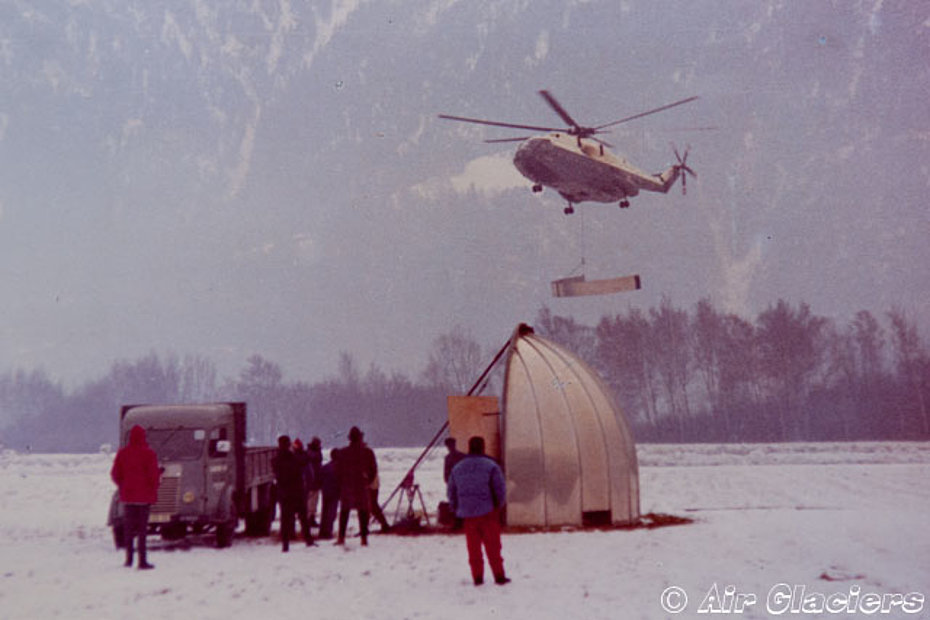
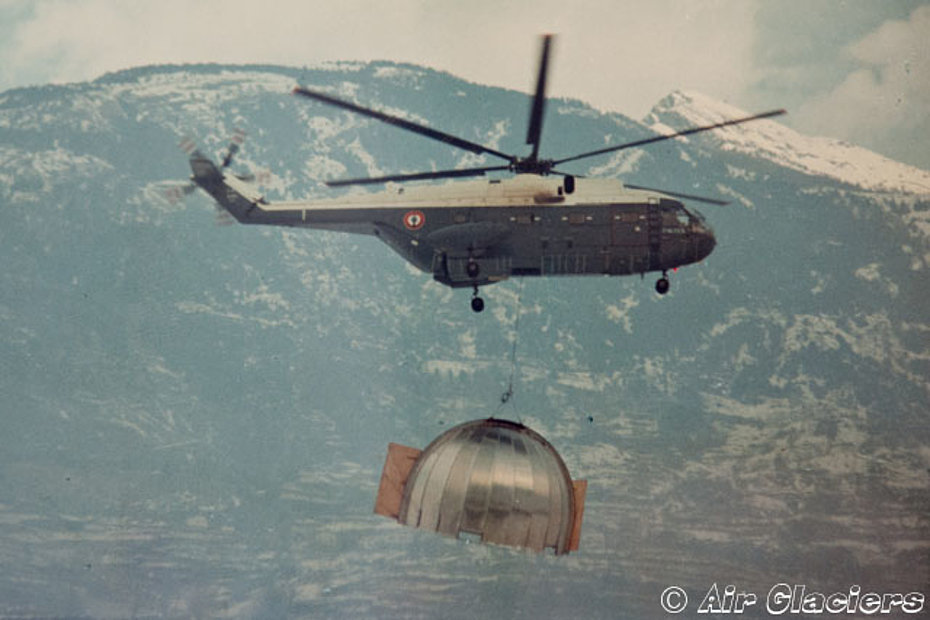
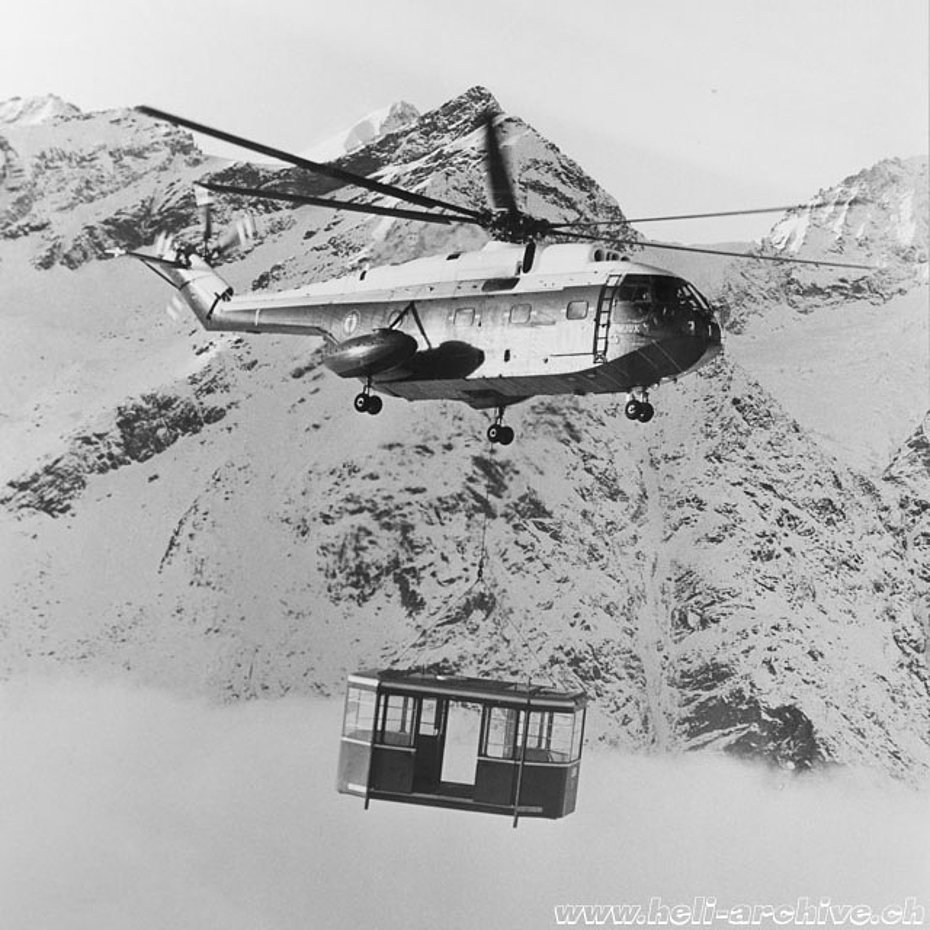
In view of the transport planned on December 20, the two sections of the dome built by the firm Biraghi SA in Thonon were conveyed by truck to Raron.
On 18 and 19 December, the flight crew carried out some test flights to determine which transport technique was more adequate as due to their particular shape and volume the sections of the dome had the tendency to rotate rapidly at the risk of breaking the steel cable to which they were suspended.
The planned transport had to be again postponed because of the strong winds exceeding 100 km/h (62 mph) blowing on the Jungfraujoch. Meanwhile the helicopter airlifted to Zermatt two large cabins weighting each 1,600 kg (3,527 lb.) for the new Rothorn’s cableway.
At the end, for various reasons, the flights on the Jungfraujoch were delayed until spring 1967.
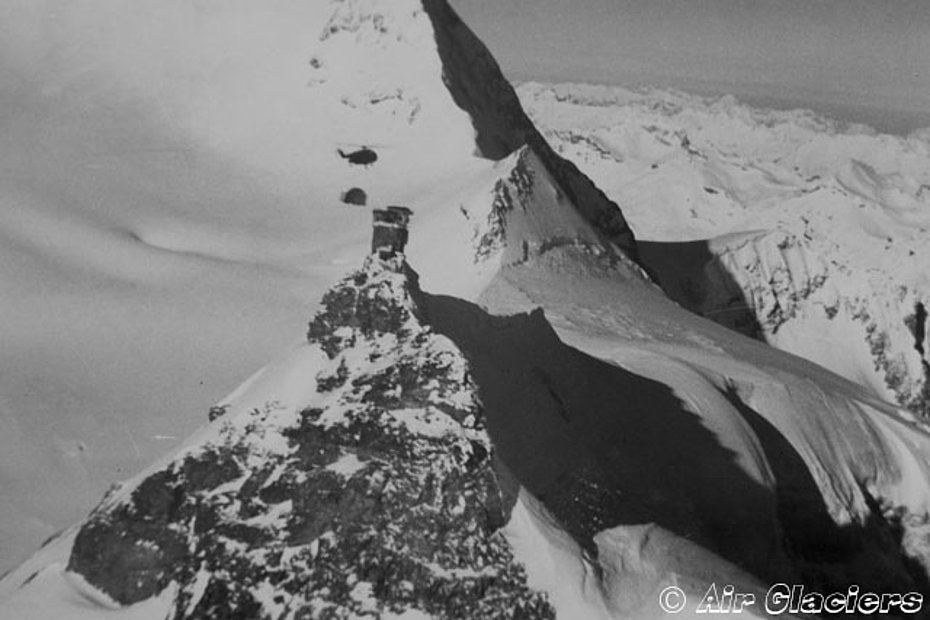
En limite de puissance...
On March 21, 1967, piloted by Jean Boulet (who set in June 1972 the absolute altitude record by climbing to 12,442 meters – 40,833 ft. - at the controls of a SA 315B Lama) along with co-pilot Daniel Bauchart and mechanic Joseph Turchini arrived again in Raron on board of SA 321 Super Frelon F-WJUX for a renewed attemp.
The next morning, after a reconnaissance flight in the region of the Jungfraujoch, Boulet returned to the airport where the latest details were discussed. In view of the delicate mission the helicopter was lightened as much as possible and refueled with the minimum fuel necessary to reach the observatory situated at a distance of about 40 km (25 miles), set in position the first of the two elements weighting each 1,400 kg (3,086 lb.) and return at full speed to the airport.
At 0800 AM F-WJUX took off with the first load suspended to a 8 meters (26 ft.) long cable and began its slow ascent towards the observatory. During the flight everything went well but after the arrival on the spot half an hour later, the helicopter, which was in radio contact with a mechanic left in place, was forced to interrupt the approach due to a downdraft and the fact that at low speed the underslung load began to swing. During the second attemp Boulet encountered the same difficulties, in particular a stronger downdraft turbulence.
Despite the use of all available power he was not able to set in position the structure. To avoid any risks the French pilot who at the time had an experience of 4,660 flight hours under his belt, of which 540 on the Super Frelon decided to return to Raron following a straight line. During the flight performed at reduced airspeed and with a limited fuel reserve, the 40,000 CHF (about 68’000 CHF in 2017) value suspended load, for reasons which were never fully determined, fell from a height of about 500 meters (1,640 ft.) on the east side of the Grisighorn at an altitude of about 2,500 m (8,200 ft.). The helicopter was at a distance of 10 km northwest of Raron. Boulet stated in a letter that he didn’t release it intentionally, while the representative of Europavia in Switzerland stated that the accident was attributable to a crewmember's mistake.
The Federal Aircraft Accident Commission concluded in its report that the cargo was lost "because of the opening of the baricentric hook to which it was suspended. It was not possible to determine whether this was caused by a technical malfunction or an involuntary or deliberate action of the pilot on the release button".
Heliswiss was contacted for the successive attempt, and said that it was ready to accept the job at the condition that the dome was further lightened.
As written by pilot Walter Tschumi in his book "Blick zurück - Mein Leben als Flieger im letzten Jahrhundert" (A look back, my life as a pilot in the past century), the transportation of the new dome was accomplished on June 23, 1967, using the Agusta-Bell 204B HB-XCG entered in service only a few weeks earlier on May 30.
The difficult mission was accomplished at a high price. Due to an unforseen problem during the positioning of the dome’s basement, Tschumi was forced to hover out of ground effect at an altitude of 3,570 meters (11,700 ft.) for a period of 15 minutes instead of maximum 5 minutes as indicated in the flight manual. This caused significant damages to the Bristol Siddeley Gnome H.1200 Mk. 610 turbine due to overheating.
But eventually the dome was in its place!
Video
Watch this home video taken during the aviation meeting organized in Sion on May 28-29, 1966. It contains excellents sequences with the SA 321 Super Frelon F-ZWWJ: http://xml.memovs.ch/f0038-010.xml
HAB 11/2017


